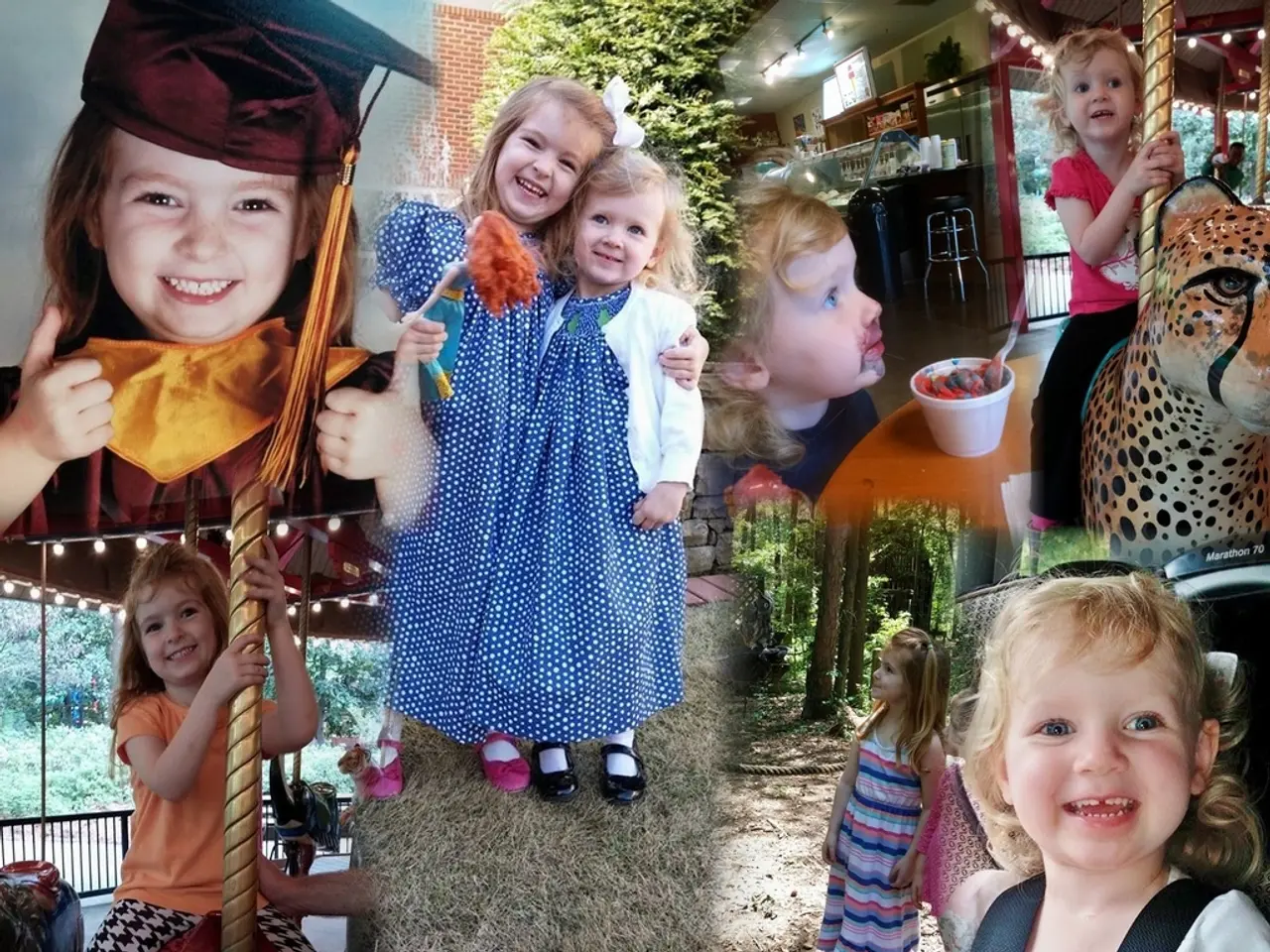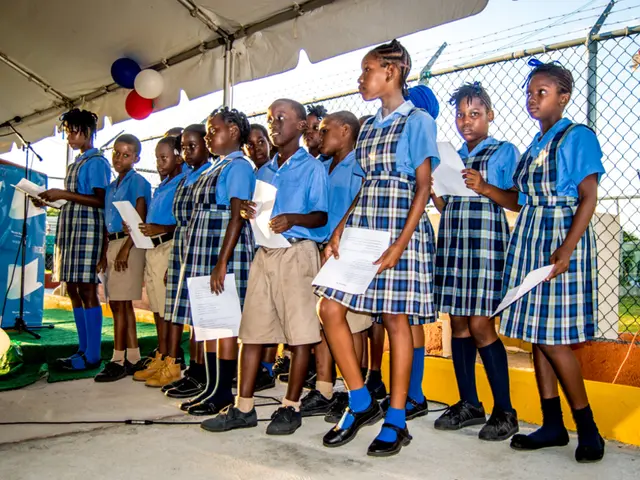School Support: Empowering Your Child for Academic Success
Engaging with Your Child's Learning Journey: A Parent's Guide
Ever found yourself wondering what your little one is up to at school, only to hear "nothing" or "I don't know"? Parents, let's face it, there's a whole lot going on in your child's classroom, and you may need to become a detective to uncover the secrets of their daily learning adventures. Here are some practical tips on how you can stay connected and actively involved with your child's classroom and school activities.
Get to know your child's teacher like the back of your hand - Drop by for a visit, send a brief note, or shoot an email. Showing an interest in your child's education can only strengthen their learning journey.
Become a classroom volunteer - Lend a helping hand in the classroom. It's a great way to gain insight into your child's learning environment and provide much-needed assistance to the teacher.
Attend all parent-teacher conferences - Take a list of questions or concerns and have a productive discussion. It's your chance to delve deeper into your child's academic progress and school environment.
Join the school's Parent Teacher Organization (PTO) - Get informed about school events, issues, and concerns. It's also a fantastic way to meet other parents and teachers.
Daily Debrief - Every evening, sit down with your child and go through their backpack or home papers. Discuss each assignment, listen to their reactions, and offer plenty of praise and encouragement. Respond to any notes or papers sent home by the teacher, and make sure you know your child's homework assignments.
Create a family calendar - Mark dates for school, family, and work activities. Include holidays, early dismissals, and any other important dates. Being organized will help you remember vital details ahead of time.
To learn more about the U.S. Department of Education's resources, visit ed.gov/parents.
Pumpkin Pie in a Bag: A Delicious Learning Experience
Cooking with your child is a fantastic way to teach life skills, spend quality time, and reinforce school subjects like math and following directions. Give this fun and yummy pumpkin pie recipe in a bag a try!
Historically, American settlers would make pumpkin pie inside the pumpkin shell. After carving the top and removing the seeds, they would fill the insides with milk, spices, and honey, and bake it in the hot ashes of a fireplace. Today, let's make a modern version of pumpkin pie in a bag, perfect for 2 to 6 servings!
Materials Required:
- 1 quart-sized zipper-type freezer bag
- 2/3 cup cold milk
- 1/2 package (4 serving size) instant vanilla pudding mix
- 1/2 cup canned pumpkin (about 1/4 of a 15-ounce can of solid-pack pumpkin)
- 1/4 teaspoon cinnamon
- 1/8 teaspoon ground ginger
- 1/2 cup graham cracker crumbs
- Whipped topping (optional)
- Cups or bowls, spoons, and a pair of scissors
Directions:
- Mix the milk and instant pudding in the plastic zipper bag. Remove the air and close it. Squeeze and knead with hands for 1 minute.
- Add the pumpkin, cinnamon, and ginger. Remove the air and close it. Squeeze and knead with hands for 2 minutes.
- Divide the graham cracker crumbs into the bottom of each cup or bowl.
- Cut the corner off the plastic bag and squeeze the pie filling into the cups.
- Add whipped topping, if desired.
- Serve with a spoon and enjoy the deliciousness!
Source: National 4-H Cooperative Curriculum System, Inc. (n.d.). Acres of Adventure, Book 2. 4-HCCS BU-08331. Northern Design Group, MN.
Edited by: Rose Fisher Merkowitz, Extension Educator-Family and Consumer Sciences, Highland County; Kathy L. Jelley, Extension Educator-Family and Consumer Sciences, Brown County; and Scott Scheer, Professor and Extension Specialist-Human and Community Resource Development and 4-H Youth Development, The Ohio State University.
Best Practices for Parent Involvement in Education
Parents play a crucial role in their child's academic success. By participating in the following strategies, they can build a strong partnership with teachers and schools, ultimately supporting their child's learning journey:
1. Classroom Volunteerism - Helping out in the classroom or school activities allows parents to understand the curriculum and teaching methods better, enabling them to effectively support their child's learning at home.
2. Parent-Teacher Organizations - Joining parent-teacher organizations provides a formal structure for communication and collaboration between parents and educators, ultimately strengthening the school community.
3. Regular Progress Communication - Parents can stay updated on their child's academic progress through parent-teacher conferences, progress reports, and consistent communication with teachers via emails or other digital updates.
4. Engagement in School Governance - Parents interested in a more active role can join school committees or attend board meetings to influence school policies and initiatives.
5. Participation in Parent Education Opportunities - Parents can attend workshops or classes to learn strategies for supporting their child's learning at home, such as study skills and monitoring grades.
6. Providing Feedback and Collaborating on Academic Goals - By offering feedback and collaborating with teachers in setting academic goals, parents can enhance their child's support system and contribute to a positive learning environment.
By implementing these strategies, parents can maintain a strong, consistent presence in their child's educational experience, ultimately fostering a supportive learning community that positively impacts student motivation, behavior, and achievement. Schools that prioritize family engagement in staff professional learning further strengthen these collaborative relationships, resulting in a more effective learning environment for all students.
- Enhance your child's health-and-wellness and cooking skills by preparing the Pumpkin Pie in a Bag recipe together, which reinforces math and following directions from the science of chemistry.
- To boost your knowledge in education-and-self-development, attend workshops or classes that provide strategies for supporting your child's learning at home, like study skills and monitoring grades.
- Expand your understanding of your child's classroom environment by getting involved in their health-and-wellness and offering help as a classroom volunteer.
- Design a family lifestyle calendar that includes food-and-drink, cooking, health-and-wellness, and parenting activities, ensuring organization and efficient coordination.
- To fortify the bond between your child's science and health-and-wellness education, discuss their daily activities and learn about the historical origins of pumpkin pie during cooking sessions.








